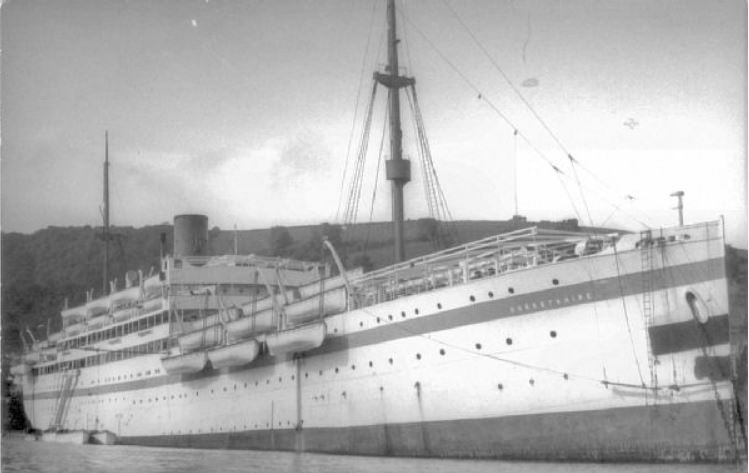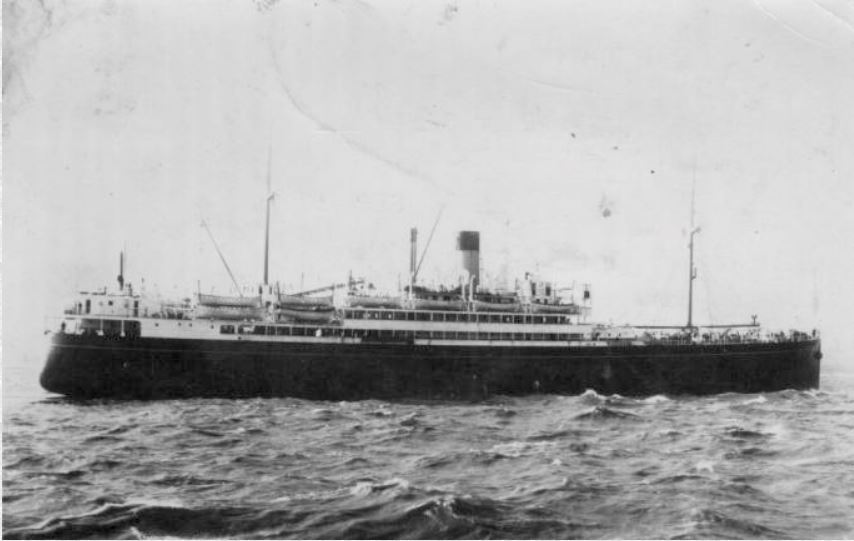HMT Dorsetshire
From Our Contribution
Remarks
Original design included higher than normal distance between decks to allow later conversion for troop carrying. When converted to carry troops in 1927, her tonnage increased to 9,345. She carried lifeboats to carry 1,934 people. Contracted on 5 year terms as a stand by troopship, during this period she retained her company livery. In September 1939 she was converted into HM Hospital Ship No. 23 with beds for 493 patients and accommodation for 59 medical staff. On 31st January 1941, during a voyage to Tobruk to evacuate troops, she was, despite her markings, attacked outside Sollum in Libya. She was attacked again on 1st February. On 12th July 1943 she was bombed and received superficial damage when 13 miles from Cape Passero while supporting the Allied invasion of Sicily.
Decommissioned on 8th March 1948 the Dorsetshire was rebuilt by Harland & Wolff to accommodate tourists, and was returned to the Bibby Line in November 1949. On 11th December 1949 she sailed from Liverpool bound for Australia with 550 passengers. She was then used to repatriate Dutch civilians from Indonesia, and in 1952 as a hostel ship for workmen building the Little Aden oil refinery.
The Dorsetshire returned to her troopship role in May 1953 when she sailed from Liverpool, with British troops for Korea. Laid up in August 1954 and broken up.

